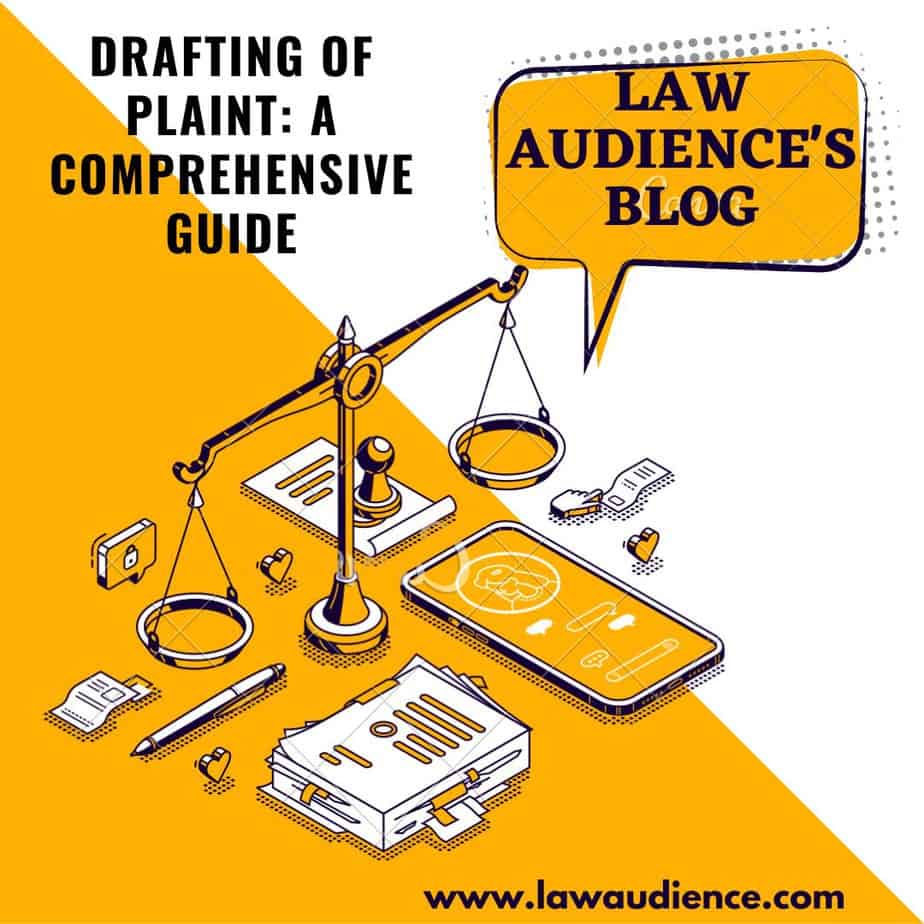Written By: Mr. Varun Kumar, Founder, Law Audience,
I. INTRO:
Drafting of plaint is an important aspect of civil litigation. A plaint is a legal document that initiates a civil case and outlines the nature of the claim being made by the plaintiff. The drafting of a plaint is governed by the Civil Procedure Code (CPC) and various rules and regulations that have been formulated by the courts. The drafting of a plaint involves several steps and requires careful attention to detail.
In this article, we will provide you with a comprehensive guide to drafting a plaint:
Step 1: Heading:
The first step in drafting a plaint is to provide the heading of the court, the case number, and the year of filing. The heading should be written in a clear and concise manner, with the name of the court at the top, followed by the case number and the year of filing.
Step 2: Title of the Suit:
The second step is to give the title of the suit, which should briefly state the nature of the claim. The title should be clear, concise, and should not be misleading.
Step 3: Parties:
The third step is to state the name, description, and place of residence of the plaintiff and the defendant(s). If there are multiple plaintiffs or defendants, then they should be listed separately. The plaintiff should also provide the contact details of the defendant(s) if available.
Step 4: Jurisdiction:
The fourth step is to specify the jurisdiction of the court where the case is being filed. The plaintiff should ensure that the court has the requisite jurisdiction to hear the case.
Step 5: Facts:
The fifth step is to state the facts of the case that give rise to the claim. The facts should be stated clearly, precisely, and chronologically. The plaintiff must ensure that all relevant facts are included and that the pleadings are not vague or ambiguous.
Step 6: Cause of Action:
The sixth step is to specify the cause of action or the legal basis for the claim. The cause of action must be pleaded clearly and precisely. The plaintiff should provide all the legal and factual grounds for the claim and should not omit any material facts.
Step 7: Relief:
The seventh step is to specify the relief or remedy sought by the plaintiff. The relief must be consistent with the cause of action and should be specific. The plaintiff should also specify the amount of damages or compensation sought, if applicable.
Step 8: Valuation:
The eighth step is to specify the value of the subject matter of the suit for the purpose of court fees and jurisdiction. The plaintiff should ensure that the value of the subject matter is correctly stated and supported by relevant documents, if any.
Step 9: Verification:
The final step is to verify the plaint. The plaint must be verified by the plaintiff or his authorized representative. The verification should state that the facts mentioned in the plaint are true and correct to the best of the plaintiff’s knowledge and belief.
II. CONCLUSION:
In conclusion, drafting of plaint requires careful attention to detail and adherence to the rules and regulations governing the drafting of plaint. The plaint should be drafted in a clear and concise manner, following the provisions of the CPC. It should be filed in the court along with the requisite court fees and supporting documents.
To Read More Blogs, Click Here:



